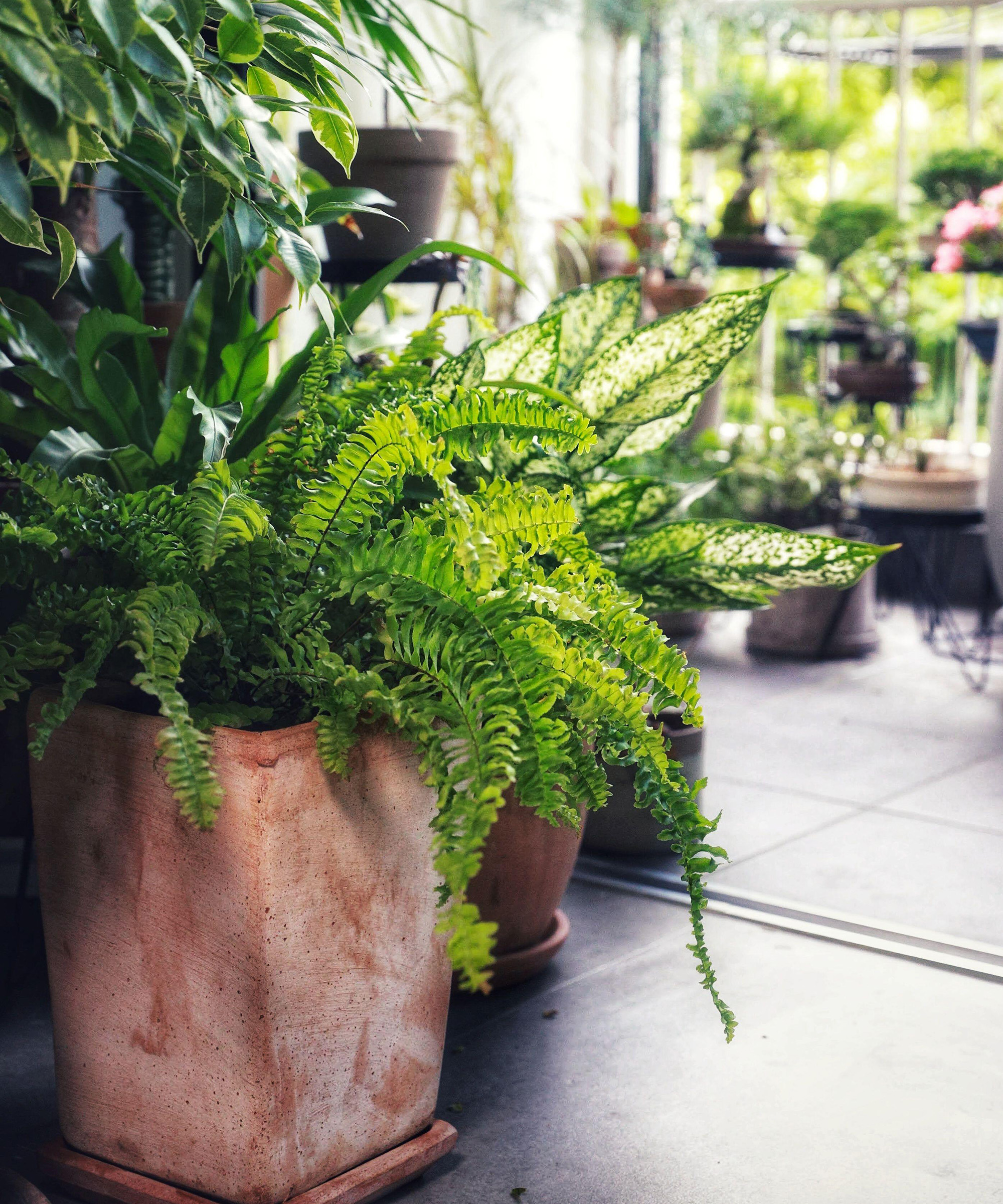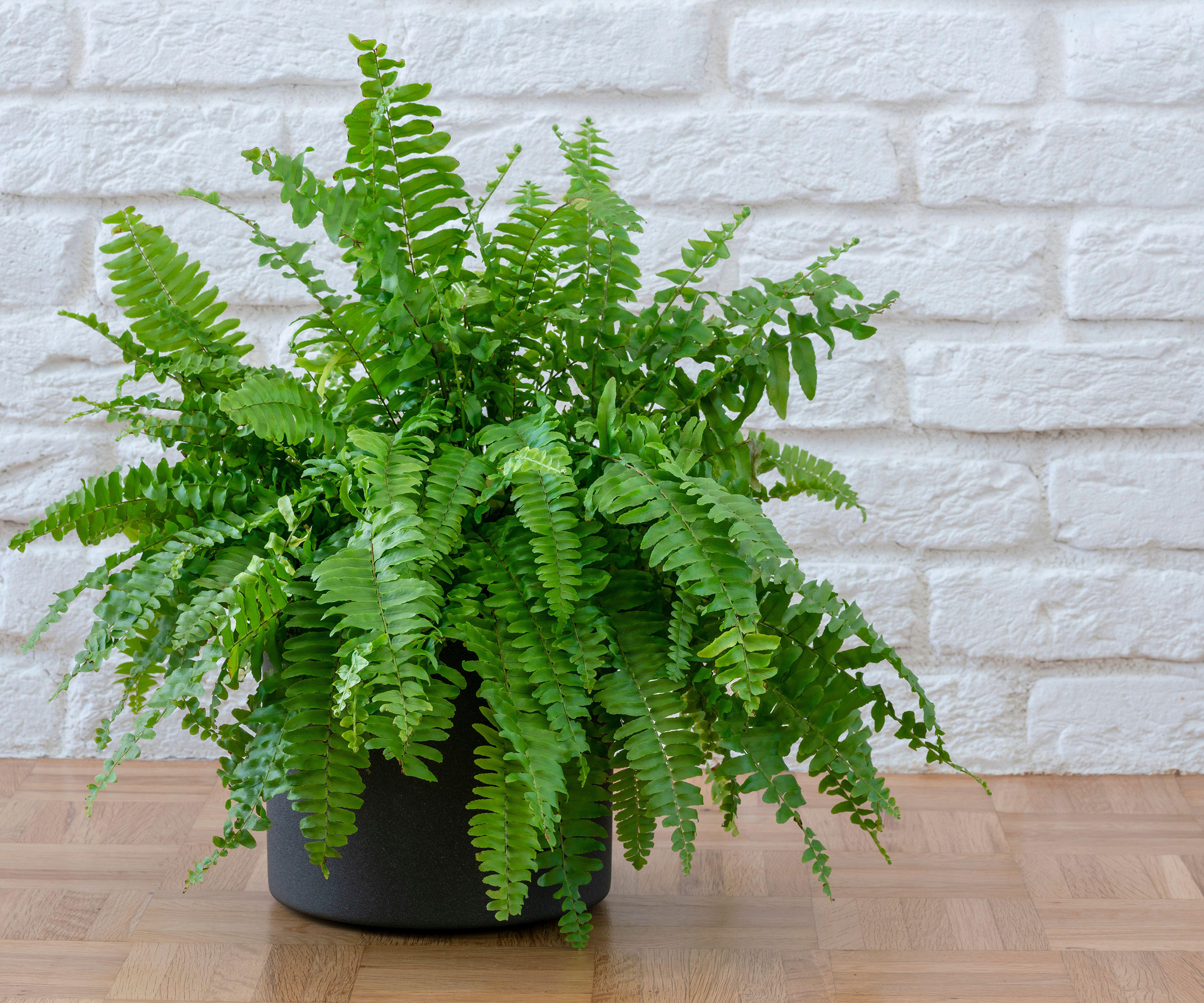How to propagate a Boston fern – and bring an explosion of foliage to your indoor garden
Discover a choice of methods to get more from your favorite ferns


Boston ferns are wonderfully textured indoor plants, and look even better in a group. Rather than buying several plants, it is possible to multiply your stocks from just one plant.
Well done if you've mastered how to grow and care for a Boston fern, as they aren't the easiest indoor plants. Perhaps now you feel like you want to share your success by creating more healthy plants?
There are several methods you can choose from to propagate a Boston fern, depending on what works best for you. We take a look at the options.

Mature Boston fern plants are ideal for dividing into new plants
3 ways to propagate a Boston fern
Here are three possible methods for propagating your Boston fern, and multiplying your collection for free.
Propagating Boston ferns by division

Use healthy plants for propagation
Unlike rubber plant propagation, which is done via cuttings, plant expert Zia Allaway feels the best way to propagate this indoor plant is through division.
'Divide your plant in the spring, so it can re-establish over the summer months,' she says.
She outlines her method below:
Design expertise in your inbox – from inspiring decorating ideas and beautiful celebrity homes to practical gardening advice and shopping round-ups.
- First off water the plant well, this makes it easier to remove it neatly from its pot. Gently lift the rootball out of its container.
- Using your hands, gently prize apart the rooted sections as you wold when propagating a prayer plant. They should have leaves attached to them.
- Alternatively you can take a sharp, clean knife and cut the rootball into a few smaller pieces.
- Pot up each new rooted section in a 50:50 mix of fresh multipurpose compost and soil-based compost. Or try this organic potting mix at The Sill.
- The containers should be just large enough to accommodate the roots.
- You should discard any sections with brown, dried leaves or unhealthy dark-colored roots as the likelihood is that these won't grow on into healthy plants. There are ways to fix a fern turning brown before you propagate it.

Zia Allaway is a garden book author, editor, and journalist. She has also written books for the Royal Horticultural Society and Dorling Kindersley publishers, including Eco-Gardening, Compost, Low Maintenance, Practical House Plant Book, Practical Cactus & Succulent Book, Indoor Edible Garden, What Plant Where, and the Encyclopedia of Plants and Flowers.
Propagating using runners

Pin runners into a pot of new compost
You may have noticed long strings growing off your Boston fern plant. These are commonly referred to as runners or 'stolons'. This is the preferred method for spider plant propagation.
They are stems which the plant sends out to create new plants in the surrounding soil and they can be harnessed to create new plants.
- Identify the runners on your Boston fern plant. They need to be long enough to reach another pot.
- Press the end of the runner onto damp compost in a second pot. You can gently pin it in place while it takes root.
- Be sure that you keep the runner attached to the mother plant until new growth starts to form. This process usually takes a few weeks.
- Cut the plant away from the mother as soon as the roots have formed.
Propagation using cuttings

Propagating from cuttings is not the best method for a Boston fern
Boston ferns are not easy plants to grow from cuttings and division is far more effective. However, if you like the idea of propagating with cuttings and have had success with this method previously, then make sure you select healthy fronds.
'Snip off a portion with at least two inches of stem and pop it into a pot with some moist soil,' says botanist, Ashley Nussman-Berry.
Place your pot of cuttings inside a clear plastic bag to increase the humidity. The soil should be constantly moist until new growth starts to appear. This is an indication that the roots are forming.

Founder of Black Planters, Ashley has a strong educational background in plants (botany, natural science, and biology degrees), an in-depth understanding of botany and horticulture, unwavering commitment to inclusivity, and a passion for sharing knowledge.
FAQs
Can I grow a fern from a cutting?
Yes, but other methods of propagating ferns are more effective. You will have a greater chance of success if you divide the root ball of your fern into sections and repot them into smaller containers.
Propagating indoor plants is a great way to get plants for free. You can gift them as Christmas plants or simple add them to your indoor garden.

Teresa was part of a team that launched Easy Gardens magazine two years ago and edited it for some time. Teresa has been a Gardens Editor at Homes & Gardens, Country Homes & Interiors and Living Etc magazine since 2020 and has developed close working relationships with top garden designers, and has been exposed to an array of rich garden content and expertise.